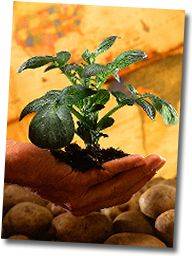The Japanese Tea Garden: A Journey of Spirit and
AestheticsTea gardens developed during Japan's medieval period, first
appearing in the early 17th century along with the advent of the tea ceremony
itself, more properly known as chanoyu or sado, the Way of Tea. In order to
achieve the appropriate quietude of spirit required to appreciate the aesthetics
of sado, a place of preparation was required, and the development of that space
marked the beginning of the tea garden. Ideally, this preparatory ground
captures the sensory experience of a trip away from busy town life to a secluded
mountain hut, passing through forested hills along the way.
To evoke the sense of a long journey in the small space
between garden entry and teahouse, these gardens employ a series of thresholds,
each one accentuating the feeling of passage, of entering progressively deeper
into a new world. The thresholds begin with a roofed outer gate, sotomon, which
separates the tea garden from the outside world. After entering, the last guest
turns to the gate and closes the wooden doors, shutting them with a wooden
cross-bolt. The dull smite of wood on wood signals the arrival of guests to the
host, who waits unseen inside. To those who have just entered, it has a deeper
meaning: they are no longer part of the world they just left. The dual concepts
of a tea garden as a place of passage and as a purified place separate from the
outer world are also reflected in the common name for the tea garden, roji. One
meaning of roji is "alleyway," which implies passage; but the word is also found
in the Lotus Sutra, in which there is an allegory comparing the profane world to
a burning house and the pure world to a roji (outer world), to which the
enlightened may escape from the flames.
Continuing through the tea garden, guests walk slowly along a
path through the garden. If there are several paths, then those not to be used
are marked as being closed by placing a single round river stone tied with a
black palm-fiber cord on a stepping stone in the path; a simple symbol that
means "do not enter."
Finding a small, roofed waiting bench, called a koshikake
machiai, guests sit down and wait quietly for their host to invite them forward.
There is no compelling reason to make them wait; preparations for the tea
gathering were most likely begun at dawn (when water drawn from the well is most
cool and fresh) and have been complete for some time. No, the guests are allowed
to wait, giving them time to commune with the ephemeral qualities of the garden:
crickets chirping, dew on moss, wind rustling in the trees.
The next threshold in the garden is a small gate, called a
middle gate, chumon, that stands halfway between the outer entry and the
teahouse itself. The portion of the garden first entered from the outer gate is
known as the outer garden, soto roji, while the portion nearer the teahouse is
the inner garden, uchi roji; the middle gate marks the separation between the
two. Although some are beautifully detailed roofed gates, more often than not a
middle gate is a simple panel of loosely woven split bamboo attached to an
upright post, its significance being not in its elaborate design but simply in
its presence.
Having passed the middle gate, guests stop next at a water
laver, tsukubai, where they rinse their hands and mouths in a ritual act of
cleansing, a preparation of body and spirit prerequisite to entering the
teahouse. The laver is usually a stone that has been carved with a basin to hold
water and is set low to the ground—thus the name tsukubai, which derives from
the verb tsukubau, to crouch down. The low position of the laver requires that
those who use it bow down before it; the lowering of the body before water is an
intentional act, showing humility before the "wellspring of life." Cleansing
complete, the guests move forward in single file to the entry of the teahouse,
nijiriguchi, a square door so small that they are forced to bow down in order to
pass. This is another act of humility, in this case intended to express that all
those who enter to join the gathering are equal.
Gates to be entered; benches for quiet communing; water to
cleanse; a series of thresholds in the garden, some physical, some inward—by
passing through the garden, the guests are changed, calmed, and made more aware
of subtleties, all in preparation for the tea gathering that follows. The tea
garden is not a "garden" at all, in the sense of a place to gather and display
plants or prized stones. It is not meant to be stunningly attractive, nor to
impress visitors with a splendid horticultural display. Rather, it is given over
primarily to broadleaf and coniferous evergreen trees and shrubs, and contains
few, if any, flowering plants; the change of the seasons is noted in more subtle
ways. The tea garden is simply a path, and the path itself a journey.
In order to recreate a tea garden on your own property, it is
not necessary to mimic the precise forms that exist in Japan, nor to use the
same materials that are employed there. The most important thing is to grasp the
essence of a tea garden and creatively reconstruct that in your garden. The tea
garden is a path that evokes a spiritual or aesthetic change in those who pass
along it. In Japan, tea gardens are designed to instill the aesthetics of
reserve and rusticity, known as wabi or sabi, in preparation for partaking of
matcha (whisked tea); however, the path you design for yourself could have a
different intent. The essential aspects that must be included are the sense of
passage from "one place" to "another," and a sense of calm. The former is best
accomplished by creating a series of thresholds in the garden that lend a
feeling of depth and passage as one moves through them. The sense of calm is
best achieved by designing with an understated naturalness and a rarefied
palette.
![]() Gardeners' Corner
Kids'
Garden
Sustainable Garden
Contact Us
Gardeners' Corner
Kids'
Garden
Sustainable Garden
Contact Us![]()

